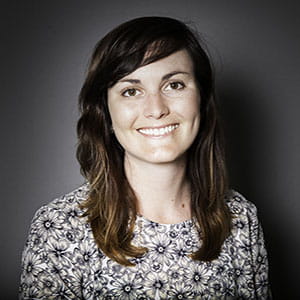The Wonders of Drexel’s Field Placement Office

Kaitlyn Levick has wanted to teach for a while.
Once she realized this, it was too late in her undergraduate program to switch majors, so she searched for an online master’s program knowing she needed something flexible. She found Drexel University’s Master’s Program in Teaching, Learning and Curriculum, and its teacher certification track.
As part of completing the program, students must obtain field experience. For online students, Drexel makes it possible for this training to be completed on site at an approved school district near the student. How? Through the School of Education’s Field Placement Office.
Even when Levick had to unexpectedly move to Copperas Cove, Texas a few weeks before the start of her pre-student teaching field placement to follow her Army fiancé, the Field Placement Office had it covered.
“It was helpful that the Field Placement Office contacted the necessary people to find a placement so that I didn't need to worry about this,” Levick said. “[This service is] very helpful for people who want to pursue their master's but don't know where they will be living or won't be able to go to in-person classes.”
Brenda Gormley, assistant director of Field Placements for the School of Education, remembers Levick’s case vividly. With the help of Field Placement Coordinators Zakita Butler and Tori Perrottet, the Field Placement Office started to work on her new placement.
“It was right smack in the middle of Texas. Like, I got the map out and I was like, ‘Oh my goodness, how am I going to find…’” Gormley trailed off as she recalled. “But Levick had to move her whole life, so our Field Placement Office got into gear. We canceled what we had going on in Alabama and we started working on locating her something in Texas. The team was able to locate her a placement, and it was seamless, so she didn't really miss anything as she was trying to progress through her program.”
Levick’s case is by no means an anomaly for the office. With the bulk of Drexel’s undergraduate and graduate education students getting their degrees online, the field placement team regularly finds placements for Dragons all over the country and the world.
“Those type of students, they have enough stress and worries and concerns that are going on in their lives,” Gormley said. “We as a Field Placement Office shepherd the field component for them and provide guidance to them so they don't have that as an additional stressor.”
The amount of field experience built into Drexel’s education programs is both unique and in accordance with the University’s overall experiential learning model, Gormley said. These experiences are separated out into four stages: Stages I &II, which are more observational; Stage III, which introduces students to more small-group and whole-group teaching; and Stage IV, which is a rigorous, full-time residency.
“We definitely exceed the requirements that you need for teacher certification in Pennsylvania, and I think that is most definitely for the betterment of the students,” Gormley said.
The student responsibility in the field placement process is mainly just to provide a list of schools they’re interested in — whether they be local Philadelphia School District schools for on-campus students, or anywhere else in the country or the world for online students (past international placement locations have included South Korea and Egypt). Some of these non-local school district representatives have never even heard of Drexel before.
“If it’s in the tri-state area, they have a pretty good idea of who we are,” Gormley said. “If you're calling, say, Arizona or California, they don't know us. We are unknown.”
Once they have that student list, the Field Placement Office shepherds most of the rest of the process of setting up the placement. Unsurprisingly, this could be a time-consuming process.
“On average, if it is a local school where we have a direct partnership, I would say probably an hour's worth of work [per student] because there are established avenues,” Gormley said. “But if I'm referencing a brand-new partnership with a brand-new school, … I would say on average for those types, we're talking anywhere from three to five full working days. And there are some that do take even longer than that, so 40-plus hours of work for one placement.”
Gormley does not say this begrudgingly. The fact that the School of Education’s programs are more “boutique” allows for this type of individual attention per student. And this attention greatly benefits students like Levick, who despite starting her Step III placement a month late, finished the placement in a first-grade classroom on-time and will move on to her Step IV placement in winter term.
“We're small, but that also provides a lot of communication with the students,” Gormley said. “It kind of creates that type of educational family development with our undergraduate students, as well as with our graduates, because it is a small number.”
Building up both local and far-reaching partnerships also benefits the various schools and school districts, Gormley says, as they are seeking good teachers to fill their needs.
“Typically schools and school districts will contact us because they know that we're building a pipeline here and they need teachers,” she said.
And selfishly? Despite the long hours and tricky situations, Gormley loves helping teaching students move from novice to teacher through this experiential learning model.
“The thing about field placement is you're getting to see students go from their learning and their book work and actually being able to put it into practice,” she said. “That cycle, it's phenomenal to be a part of and it's something that you're just like, ‘Wow, I really helped out!’ Having good mentor teachers and really having connections with mentor teachers, you just see our students blossom and grow.”
In This Article
Drexel News is produced by
University Marketing and Communications.

